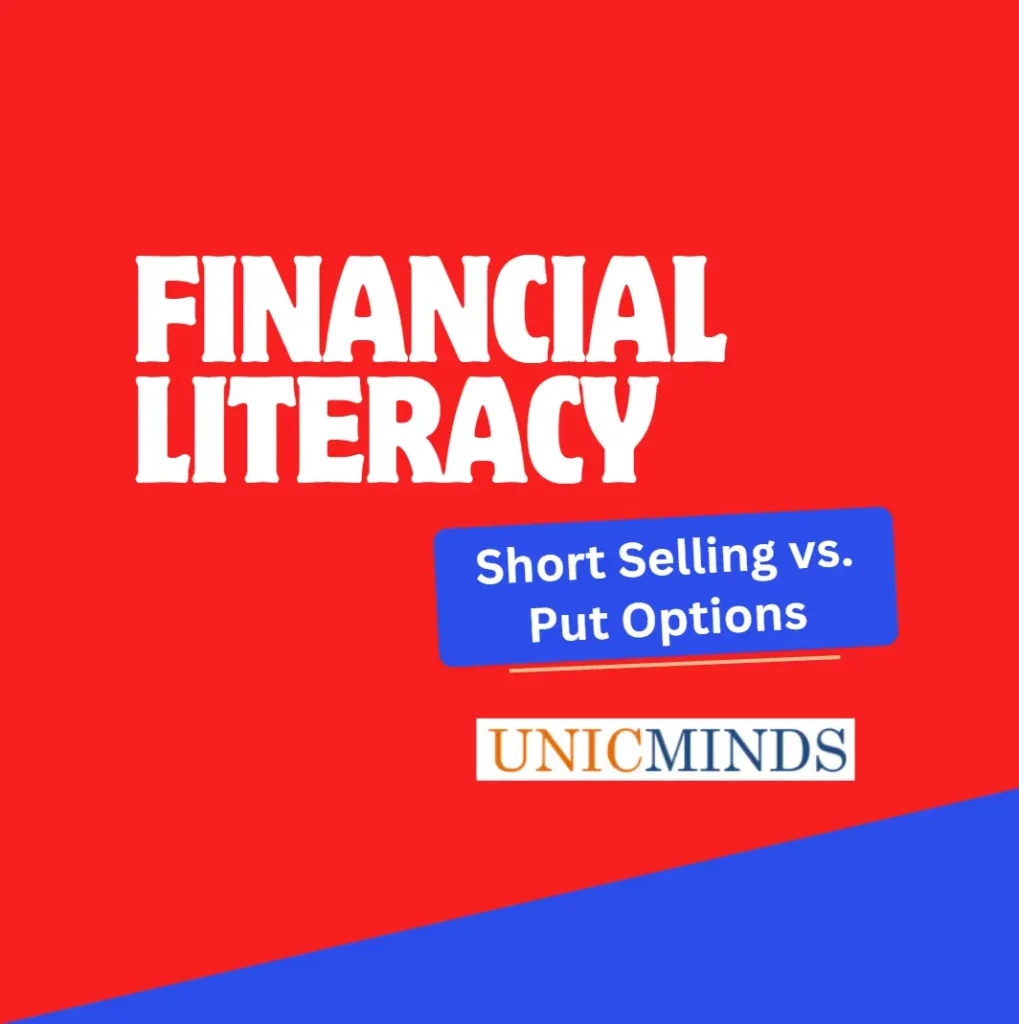Technically, short and put are very different because “short selling” is a type of strategy to make money from a stock expected to drop. On the other hand, “put options” are a type of derivatives instrument; options are derivatives that are based on an underlying stock. But, they do have their similarities. Let’s understand each of them in detail.
“Short vs. Long” – Trading Strategies
Short selling is a trading strategy where investors speculate on a stock’s decline. Short sellers bet on, and profit from a drop in a security’s price. The opposite equivalent of “short” is “long”. Having a “long” position in a security means that you own the security. Investors maintain “long” security positions in the expectation that the stock will rise in value in the future.
Short selling involves borrowing a security whose price you think is going to fall and then selling it on the open market. You then buy the same stock back later, hopefully for a lower price than you initially sold it for, return the borrowed stock to your broker, and pocket the difference.
You borrow 10 shares of a company (or an ETF), then immediately sell them on the stock market for $10 each, generating $100. If the price drops to $5 per share, you could use your $100 to buy back all 10 shares for only $50, then return the shares to the broker.
Both short and put are bearish strategies where the investor makes money when the market goes down. Buying put options and short selling shares are two tactics traders employ to profit from falling equity prices. Short selling involves selling borrowed assets in anticipation of a price decline, while put options give the right to sell assets at a predetermined price within a specific timeframe.
“Futures vs. Options” – Derivative Contracts
Futures & Options are derivative products in the stock market. Derivatives are like a bet on the value of assets such as stocks or index. Because markets are always fluctuating, in order to hedge the risks, two parties enter into a derivative contract to buy or sell the underlying asset at a pre-agreed price and on a fixed pre-agreed date.
In Futures, customers are obligated to buy/sell as per the contract.
In Options, customers are not obligated to buy/sell.
Examples: Stock Futures, Exchange Futures, Metal Futures, Energy Futures, etc.
“Call vs. Put” – Types of Options
Call and Put are technically types of options. You have to pay a premium to purchase these options and when things don’t go in favor of you, you lose only the premium (fixed downside).
A Call option gives the buyer the right but not the obligation to buy a specified quantity of an underlying asset. A Put option gives the buyer the right but not the obligation to sell a specified quantity of an underlying asset. The time period of these options is usually a three month period.
A put option becomes more valuable as the price of the underlying stock or security decreases. Conversely, a put option loses its value as the price of the underlying stock increases. As a result, they are typically used for hedging purposes or to speculate on downside price action.
Call options and Put options are usually sold in multiples of 100 shares in the contract.
Spot Price vs. Strike Price – Used in Derivative Contracts
Spot price is the current market price of an asset, while the strike price is the price at which the holder of an options contract can buy or sell that asset in the future. The strike price on an options contract is the price at which the underlying security can be either bought or sold when it’s exercised. Therefore, strike price is also called as Exercise Price.
Assume there are two option contracts. One is a call option with a $100 strike price. The other is a call option with a $150 strike price. The current price of the underlying stock is $135. Assume both call options are the same. The only difference is the strike price.
- The first contract is worth $35 at expiration. It’s in-the-money by $35 because the stock is trading $35 higher than the strike price.
- The second contract is out-of-the-money by $15. The option expires worthless if the price of the underlying asset is below the call’s strike price at expiration.
We can look at the current stock price to see which option has value if we have two put options, both about to expire, and one has a strike price of $40 and the other has a strike price of $50. The $50 put option has a $5 value if the underlying stock is trading at $45 because the underlying stock is below the strike price of the put.
The $40 put option has no value because the underlying stock is above the strike price. Remember that put options allow the option buyer to sell at the strike price. There’s no point using the option to sell at $40 when they can sell at $45 in the stock market so the $40 strike price is worthless at expiration.
“Short (selling) vs. Put (options)”

When you short a stock you effectively borrow it from your broker and sell it. You are hoping the stock price will fall and you can buy it back at a later date for less money than you sold it and return the stock back to your broker. With this option you have limited gain (because at some point the stock will be worth nothing) and unlimited risk of loss if the stock price shoots up.
With put options you purchase the right to sell at a strike price which ideally would be above current market value. Buying put options you can only lose as much money as the contracts cost (as opposed to short selling where if the stock price keeps going up you lose more and more money) and as the price of the stock drops the value of your put contract goes up exponentially.
Then, why do “shorts” even exist?
Short selling is just a trading strategy. It is not an instrument. So, it will exist forever.
Additionally, for large institutions, shorting provides the benefit of being able to dump the borrowed shares in the open market in a high volume. This causes a free fall which triggers tons of stop losses and can cause panic selling in the market.
If you buy puts this doesn’t happen. Also there is obscurity to short selling, whereas the open interest in puts is highly visible and mostly accurate on a daily basis. Buying puts usually results in a market maker hedging by selling delta*100 shares, so it can result in selling pressure depending upon how the market maker executes.
Hope this is useful, thank you.
You may like to read: The 15 Best Quotes in Computer Science, Financial Literacy – Compounding & Discount Rates, & Common Coding Terms Used in Computer Science



